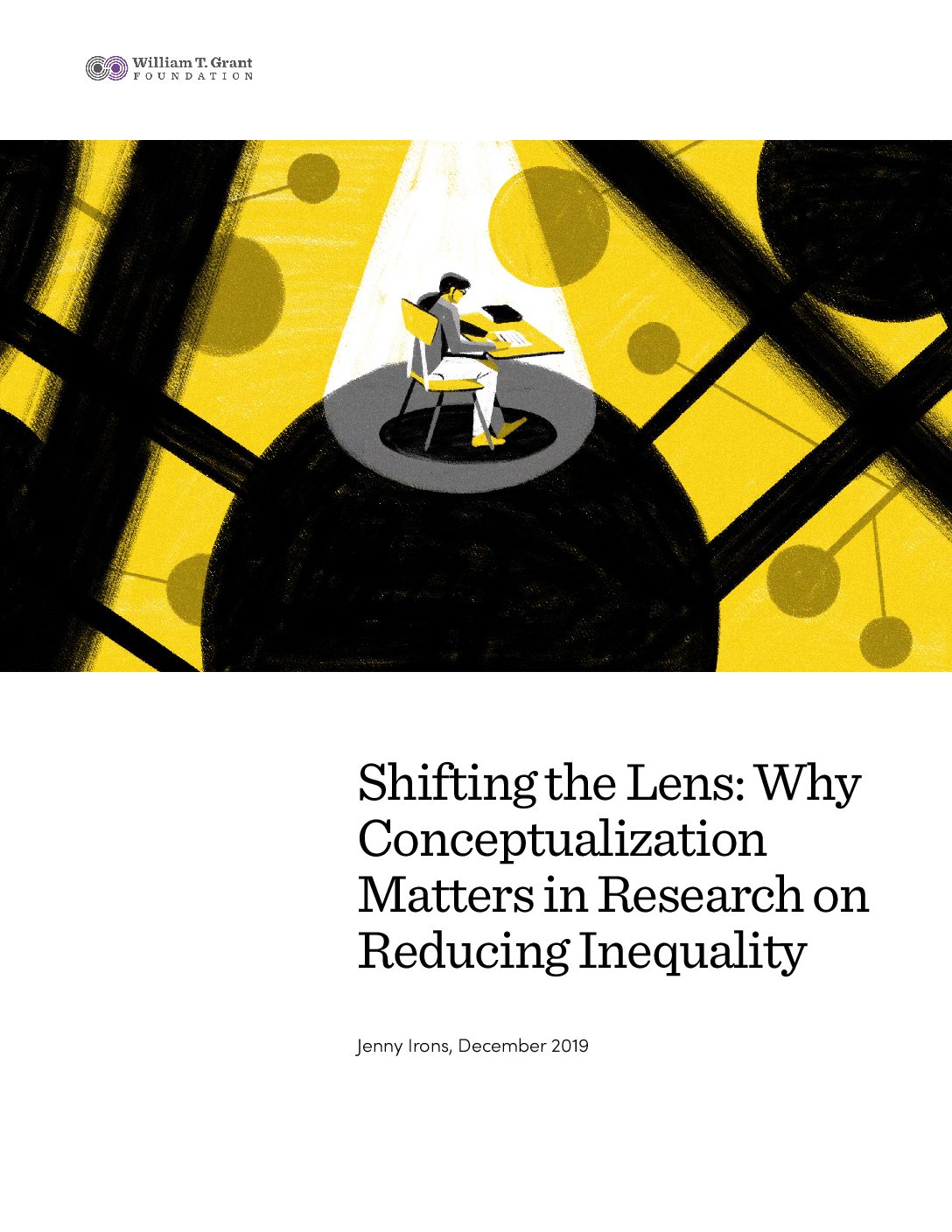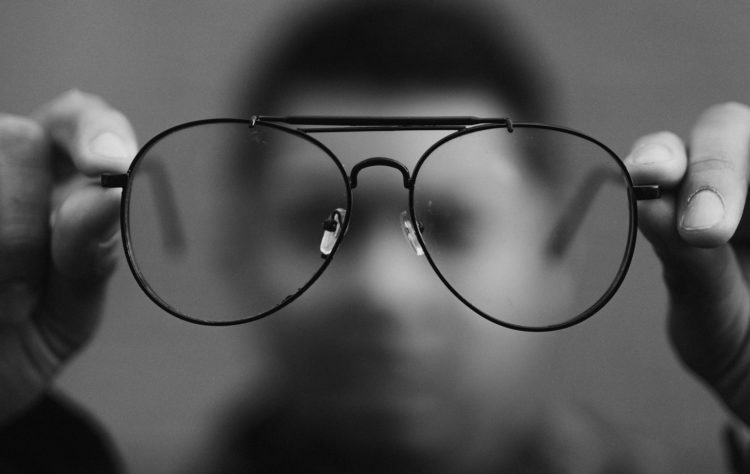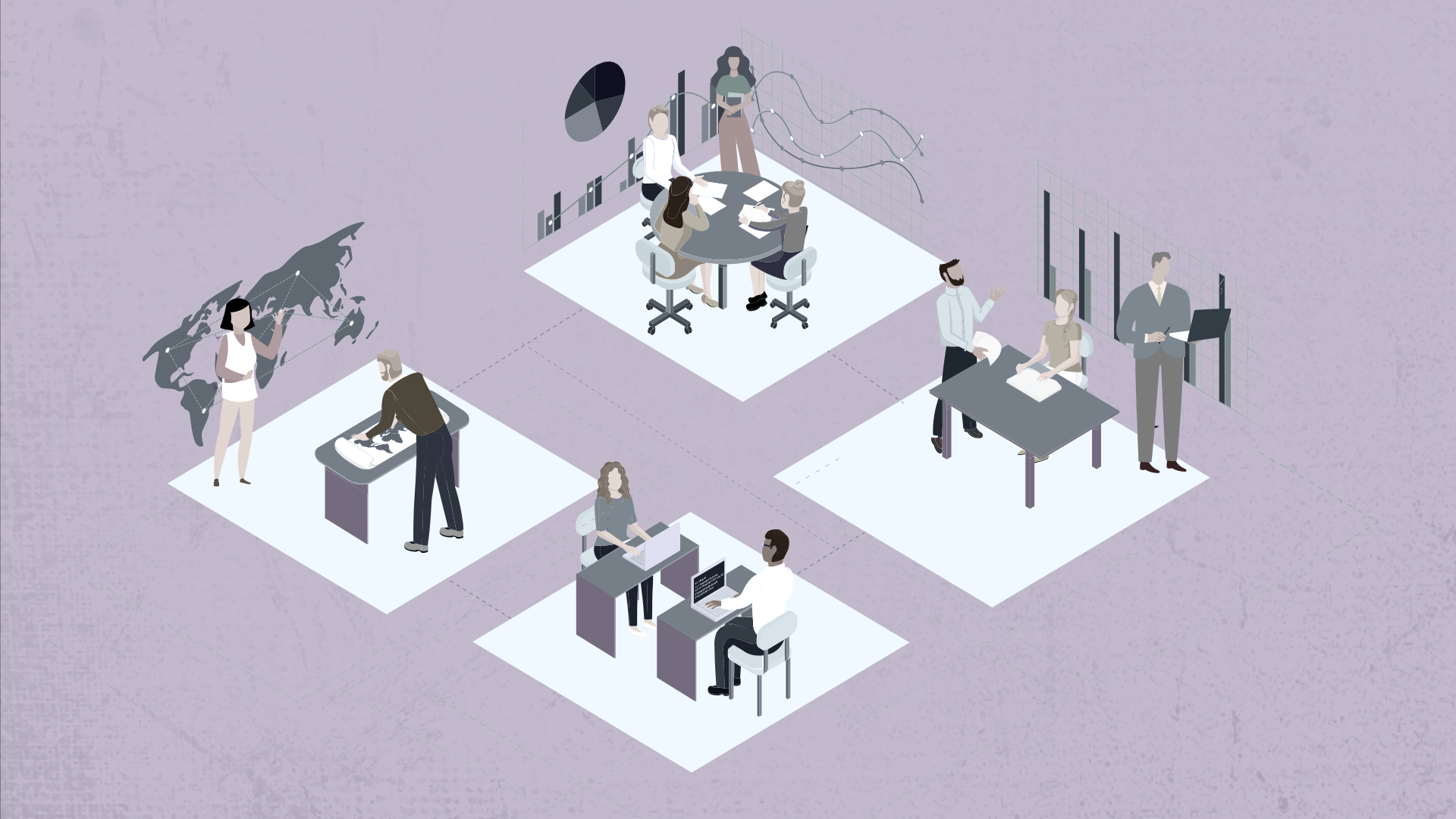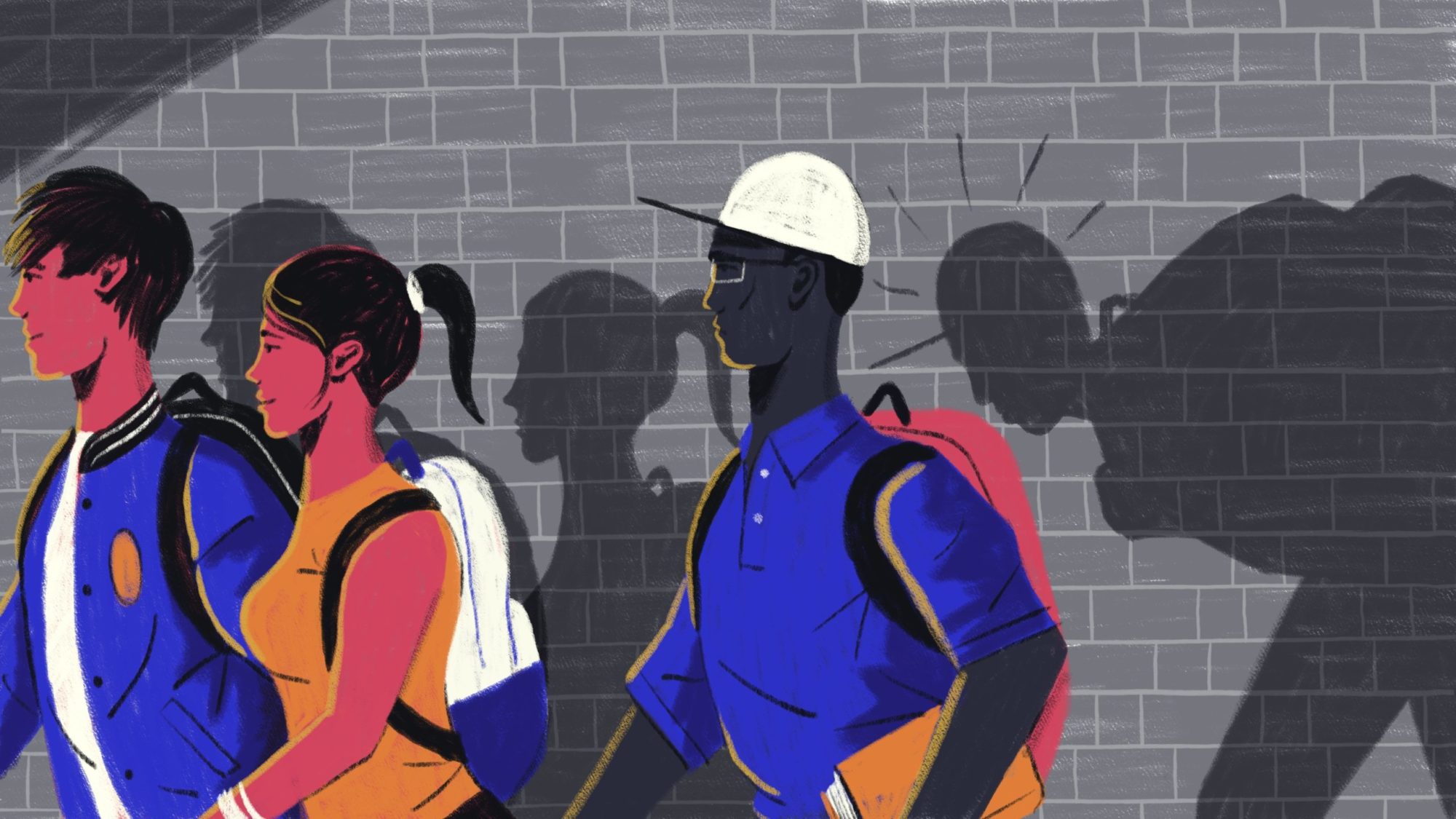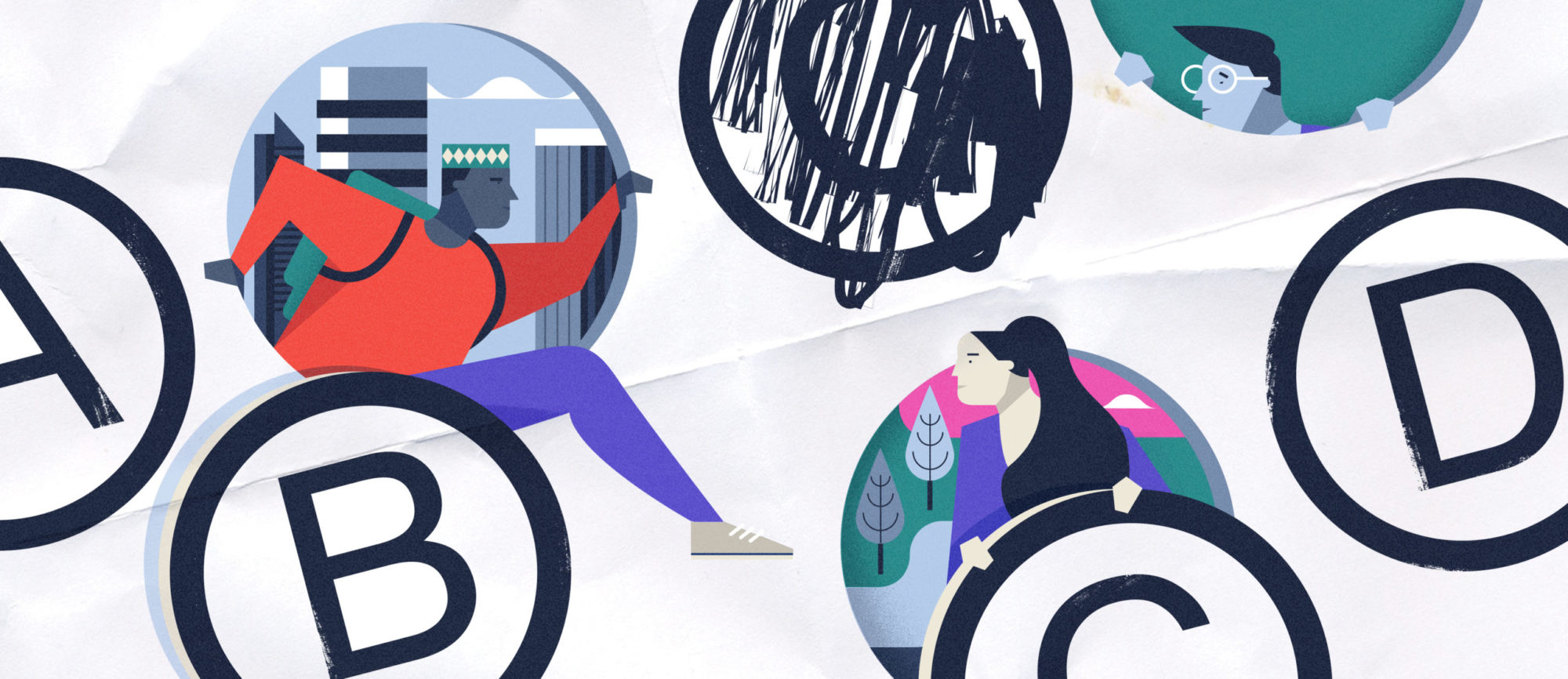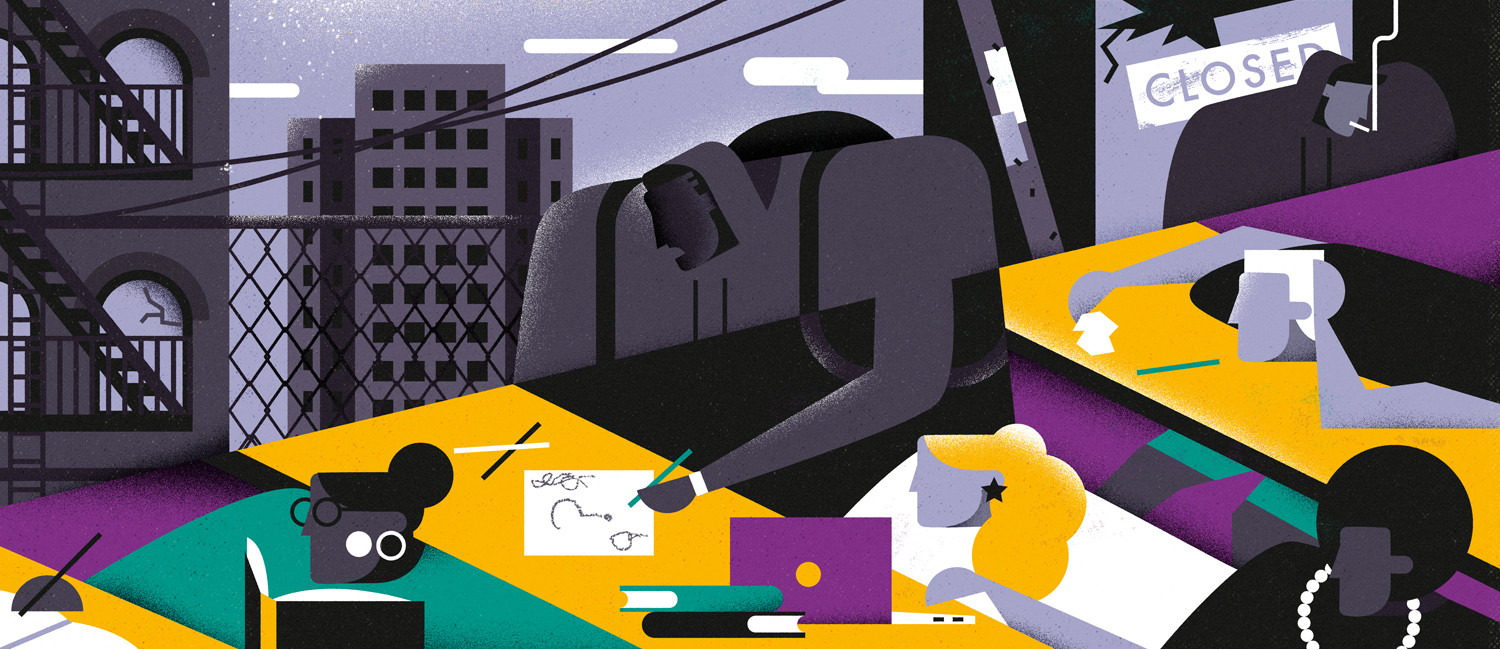Social science can be instrumental in illuminating responses to persistent social problems like racial or economic inequality.1 And a powerful starting point for studies that pursue this goal is a nuanced understanding of the problem at hand. That is, with a well-developed conceptualization of the contours, causes, and consequences of a given challenge, researchers are better equipped to explore how the challenge can be addressed.
Reflecting on ways for researchers to approach the social world in theoretically rich and innovative ways, Howard Becker (1998) encouraged the conjuring of a mental image: “What do [social scientists] think they are looking at? What is its character? Most importantly, given what they think it is, do they study it and report their findings in a way that is congruent with that character” (p. 10)? The extent to which a researcher cultivates such an image at the outset of a study is especially important when investigating the multifaceted problems of a complex society. A rudimentary image would show only that a problem exists. But this offers little to build on—nothing to help determine the scope of the problem, or address it, or assess how it might change. A more developed image—one that provides a lucid representation of the multifaceted “character” of the problem—depicts what specific problem exists and why. This level of conceptualization offers avenues for specifying responses that map directly onto the underlying explanations.
With respect to research on reducing inequality, the way one conceptualizes the problem is important because it directly informs where and how the research will focus in terms of building or testing a specific response. This may seem obvious, but given that social science research traditionally ends at the point of elucidating or explaining problems like inequality, we are often not accustomed to envisioning such understanding as a possible starting point. We can transcend this convention and move inequality research forward, however, by using what we already know to imagine pathways that challenge, reduce, and potentially eliminate entrenched inequalities.
With respect to research on reducing inequality, the way one conceptualizes the problem is important because it directly informs where and how the research will focus in terms of building or testing a specific response.
The Foundation’s call for studies on reducing inequality in youth outcomes asks researchers to ground their work in such imagery—to “richly conceptualize” inequality as a first step in designing studies to identify, build, or test ways to reduce inequality. Richly conceptualizing inequality requires providing a clear and compelling case for what inequality exists and why it exists. In turn, researchers can then specify responses that map directly onto the underlying explanations for why an inequality exists and thus, how it might be reduced. As the building block of a study, the conceptualization of inequality lays the groundwork for all that follows—for the proposed response and for the operationalization of key explanatory factors, processes, and outcomes. When studies of responses to inequality are built on well-developed understandings of what inequality looks like and the factors that explain it, they may well generate different, and perhaps better, outcomes for youth.
Conceptualization: What Does the Inequality Look Like?
Inequality exists along many bases, or dimensions, in the United States. At the Foundation, the research we fund usually aligns with our interest in inequality among youth by race, ethnicity, economic standing, immigrant origin, and language minority status, but the lessons we have learned might be applied to studies of responses to all dimensions of inequality. Conceptualizing an inequality begins with documenting what the inequality looks like. As noted above, this may seem like an obvious task, but we think Becker’s admonition of nearly fifty years ago continues to resonate. The more that researchers begin a study by engaging with the character of an inequality, or a well-developed picture of what the inequality looks like, the more likely they are to start with an image that will generate a more robust response.
The first step in constructing a rich conceptualization of inequality is the clear articulation of what groups will be examined. Specifying groups is important both for defining the inequality and for establishing how a program, practice, or policy might directly address it. Terms like “disadvantaged,” “at-risk,” or “underrepresented” are imprecise and, unless explicitly defined, presuppose the reader will infer the groups to which the term refers, often operating like a code for racial or socio-economic groups. Such terms also run the risk of conflating race, class, and other categories, as well as maintaining stereotypes about particular groups. To the extent that a study clearly delineates the categories that will be examined, the more able it will be to draw a clear line to the proposed strategies to tackle the inequality.
Specifying groups is important both for defining the inequality and for establishing how a program, practice, or policy might directly address it.
As research on race and ethnicity tells us, group experiences vary widely across and between groups (Cornell & Hartmann, 2006; Hochschild & Shen, 2014; Okamoto, 2014; Simms, 2017; Yoshikawa, Mistry, & Wang, 2016). Investigators looking to conduct such work, then, need to specify exactly which groups they will study. For example, Asian Americans, as a group, have better economic and academic outcomes than African Americans in the United States. Yet, if one deconstructs the category of Asian American into groups based on national origin like Japanese, Indian, and Cambodian, one would find that youth of Japanese origin have much better outcomes than Cambodian youth. Thus, in a study that examines ways to reduce inequalities in academic outcomes between White youth and youth of color, specifying which youth of color a policy might target is important for thinking about what that policy will look like. If a study will focus on all youth of color compared to White youth, it can specify which groups that category (“youth of color”) includes (e.g., African American, Latinx, Native American, and Asian American). If a study will decompose a panethnic group into its national-origin categories, it can explain why disentangling the larger group is important for reducing a particular inequality. Regardless of what groups a study will examine, it is vital to identify the groups to be examined and explain why those particular groups are the focus of a project.
The second step in describing what the inequality looks like involves developing the image. How do groups vary, for example, in academic, economic, behavioral, or socio-emotional outcomes? What is the compelling case that inequality exists? Imagine, for example, that a researcher wants to understand how to reduce racial inequality in academic outcomes. One approach would be for a researcher to provide quantitative evidence that inequality exists by sharing startling statistics about an outcome like out-of-school suspension rates. That researcher might focus on the variables, both independent and dependent, that create a picture of the inequality. But another researcher might bear in mind that variables are proxies—representations of the material conditions, lived experiences, or everyday realities of individuals’ lives that cluster into patterns of unequal outcomes and flesh out the character of those conditions, experiences, and realities. What is represented by the variables that document the disproportionate exclusion of Black youth from the classroom? How do youth experience this inequality? As noted by Carter, Skiba, Arredondo, and Pollack, in studies of responses to inequality “you can’t fix what you don’t look at” (2017). Variables represent conditions and experiences, and to the extent that a researcher fully identifies and understands these, the more likely the researcher is poised to fully address them. If a researcher focuses solely on the numbers of out-of-school suspension rates, what might be overlooked are the experiences and processes of bias, discrimination, or peer interactions. The challenge, then, is to determine what quantitative and/or qualitative story can be told to represent the realities of youth who experience this inequality.
Conceptualization: Why Does the Inequality Exist?
To identify strategies for reducing inequality that are congruent with the character of an inequality, a robust understanding of what brought about the inequality is essential. Why does the inequality exist? What conditions, mechanisms, or processes does evidence suggest are at the root of the inequality? Surprisingly, studies that attempt to examine a response to an inequality do not always explore or test responses that have anything to do, at least explicitly, with race, ethnicity, class, or other status. While responses may not always need to incorporate attention to, say, the racism that may shape unequal outcomes, we ask researchers to consider what is lost when studies to reduce inequality are not grounded in the character of the inequality, which includes not only what the inequality looks like but also why it exists.
Herbert Blumer wrote that scientific study should be “shaped by the underlying picture of the empirical world . . . [that] sets the selection and formulation of problems, the determination of what are data, the means to be used in getting the data, the kinds of relations sought between the data, and the forms in which propositions are cast” (1969, pp. 24-25, as cited in Becker, 1998, p. 10). Existing explanations of the causes and consequences of inequality usually provide the underlying picture researchers need to identify how a proposed response will directly address a particular inequality. A researcher interested in studying a strategy to reduce racial disparities in out-of-school suspensions, for example, might describe what the inequality looks like, focus on a well-supported theoretical explanation for why it exists, and then describe a program, policy, or practice to reduce the disparities—one that is expected to directly tackle the racial element of the disparity. Addressing this issue, a researcher might turn to explanations for the inequality, like differences in school resources, neighborhood conditions, classroom size, or teacher behavior. A researcher might also need to think about race and racism. Carter et al. write that “to be effective in truly addressing racial disparities, our conversations about race must be a part of a process in which we . . . thoroughly discuss the contexts and interactions creating [racial/ethnic differences] . . .” (2017, p. 225).
To identify strategies for reducing inequality that are congruent with the character of an inequality, a robust understanding of what brought about the inequality is essential.
Let me say more about what is lost if a study to reduce inequality leaps from documentation of what inequality looks like to a response without exploring the why. A study that seeks to reduce the gap in Black-White test scores, for example, might begin by documenting empirical findings that show White children consistently earn higher scores on 3rd grade reading standardized tests than do Black children. While this approach specifies a dimension of inequality and documents unequal outcomes, a stronger approach goes on to develop a rich and compelling case that fully engages with the literature to explain why those outcomes diverge. Will the study explore causes such as residential segregation, levels of parental education, school characteristics, or teacher bias? Focusing solely on students might result in an intervention that seeks to fix some deficiency in the students themselves, rather than considering the contexts and interactions that created the inequality—i.e., the very contexts and interactions that need to be fixed in order to improve youth outcomes.
Operationalization: How is the Inequality Measured?
The roots and manifestations of inequality are complex, and operationalization is a researcher’s opportunity to capture that complexity as best as possible. When studies to reduce inequality are grounded in vague or cursory conceptualizations of inequality, they also usually lack compelling underlying pictures that point to directly related responses. Consequently, they often advance thin or incomplete operationalizations of inequality. But researchers can advance complex operationalizations of inequality that align with the underlying conceptualization and proposed response, whether a study uses qualitative, quantitative, or mixed methods. Because the way in which inequality is operationalized has implications for what a study finds, it is important that researchers develop as robust an approach as possible to fully measure what the inequality looks like and how it might be reduced. For example, if a study of disparities in academic outcomes between immigrant-origin and non-immigrant White youth operationalizes inequality by focusing solely on individual-level variables, like academic preparedness and test scores, it might suggest strategies focused on increasing the human capital of the immigrant-origin youth rather than thinking more broadly about the effect of immigration policies and practices, school climate, or classroom practices. How will constructs capture not only the inequality in outcomes, but also the conditions, mechanisms, or processes that underlie those outcomes?
At a minimum, measures of the categories or groups to be studied should correspond with the underlying conceptualization of the inequality to be addressed, because the selection of indicators has implications for the conclusions a study may draw (Diemer, Mistry, Wadsworth, López, & Reimers, 2012). Quantitative analyses of race often rely on standard demographic categories of group membership; in such cases, the categories should directly correspond to the inequality outlined. Moreover, the burden is on researchers to explain which construct they are using and why. For example, a study comparing outcomes for Black, Latinx, Asian American, and White youth should make clear whether the data will capture those four categories without subsuming differences or dropping a focus on a group due to lack of data, or whether it will not, and why. Ideally, studies of panethnic or racialized groups, such as Asian Americans, would specify which subgroups are included in the umbrella term or explain why a breakdown is unavailable, as well as what that means for study findings (Yoshikawa et al., 2016). Conversely, researchers may also want to explain why studying a panethnic group rather than disaggregated ethnic groups is more important for the purpose of their study. Similarly, studies of socioeconomic status should, at a basic level, specify measures that correspond with how the status is conceptualized, such as by parental educational attainment, family income, family wealth, etc. Diemer and colleagues (2012) note that “using different indicators of social class to study the same phenomena may yield different conclusions” and that measures should correspond with a researcher’s “particular purpose and study population” (p. 80-81). An analysis of socioeconomic inequality, for example, might call for either objective or subjective measures, or an emphasis on access to resources or attention to power differentials (American Psychological Association, Task Force on Socioeconomic Status, 2007).
The roots and manifestations of inequality are complex, and operationalization is a researcher’s opportunity to capture that complexity as best as possible.
Readily available categorical measures of categories like race, immigrant status, and economic standing are often not as advanced as our theoretical conceptualization, posing challenges for the measurement of inequality (Carter & Reardon, 2014; Yoshikawa et al., 2016). Thus, researchers might want to think creatively about how to most fully operationalize the focal inequality, whether through additional measures and/or mixed methods. While qualitative approaches allow researchers to unpack the complexity of the lived experience of socially constructed categories like race and immigrant origin status (Louie, 2016), quantitative scholars are also developing innovative approaches capturing more complex measurements of inequality (Diemer et al., 2012; Sewell, 2016; Stewart & Sewell, 2011).
Still, how does one quantify, much less fully measure, the complexity of the “social experience” that is racial inequality (Stewart & Sewell, 2011)? Stewart and Sewell (2011) explain how, despite their strengths, most quantitative methods fall short in capturing the mechanisms that perpetuate inequality. As they note, identifying and unpacking the mechanisms can be of central importance in figuring out policy and practice solutions to reducing inequality. Their suggestion is that researchers use “complimentary quantitative methods . . . as well as qualitative methods that better capture the immeasurable human experience (p. 226).” Collaboration across disciplines and expertise can generate such projects, but we recognize this is not always possible. For quantitative researchers, the answer may be to capture as fully as possible the moderators and mediators that result in given outcomes. As ever, we do not have all the answers, but we encourage researchers to think with specificity, and, when possible, to operationalize with boldness and clarity.
Rich Conceptualization: Two Examples
Two studies recently funded by the Foundation highlight how researchers can employ the strategies discussed above to enrich their research.2 One study examines whether mitigating the effects of material disadvantage may improve criminal justice outcomes for socioeconomically disadvantaged men and women, and another tests whether explicitly attending to racial bias helps teachers improve their behavior toward and expectations of Black youth, thereby reducing racial academic inequality.
Rikers Island Longitudinal Study,
Bruce Western
In a study to identify ways to reduce the jail population at Rikers Island as New York City prepares to close the institution by 2026, grantee Bruce Western asks why some individuals are detained before trial and others are not. Working with the New York City Mayor’s Justice Implementation Task Force, Western examines how “conditions of material disadvantage [are] connected to criminal involvement or criminal justice system contact” to identify responses that might mitigate those conditions and help more individuals avoid pretrial detention by showing up for court and avoiding arrest on new charges.
Focusing on the socioeconomic dimension underlying the disproportionate detention of young Black and Latinx men and women from some of New York City’s most economically disadvantaged neighborhoods, Western uses extant literature to offer explanations for the causes and consequences of the connection between poverty, inequality, and violence. He draws on studies that demonstrate how “poor contexts structure social interaction in a way that makes violence more likely,” rather than explanations that blame individuals for violent motivations. He also recognizes that studies of poverty and material hardship explain how “day-to-day social and economic insecurity” can undermine self-efficacy and make getting through mundane daily routines—that involve things like showing up for meetings—more difficult. Thus, Western develops a conceptualization of inequality that focuses on the socioeconomic dimension and explains unequal outcomes in the criminal justice system as stemming largely from conditions of material disadvantage, rather than, say, from individual shortcomings or human capital differences.
Tracing a line between extant literature and the setting and outcomes that are the focus of his study, Western examines whether the lack of strong social integration that often accompanies the lack of stable housing, income, or healthcare creates unstable living situations, making it difficult to show up for court hearing, more likely to engage in criminal activity, and more likely to be arrested. The study will enroll 600 men and women who are arraigned on charges in the five boroughs of New York City to examine these questions.3
Because Western is interested in understanding how the conditions of material hardship engender poor criminal justice outcomes, he measures economic standing, the central dimension of this study, using a measure that attempts to more fully capture the material conditions, or lived experiences, of poverty. Based on prior research at Columbia University’s Justice Lab, this study will use survey measures that offer a more complex picture of the lived experience of poverty by collecting information about income (accounting for cost of living, in-kind benefits, and expenditures for medical care, child care, or community), material hardship, and health. Western uses this survey to better account for what the sociological literature tells us about how poverty shapes individuals’ lives in ways that increase their exposure to violence as well as their risks of violent offending, victimization, and failing to appear for court dates. His team also uses ecological momentary assessments (EMAs), administered via smart phones, to “measure daily variation in participants’ health, socioeconomic status, and contextual factors that are associated with our primary outcomes of appearing in court and avoiding new arrests.” In addition, the team will conduct qualitative interviews with 100 participants.
Western’s study does not conceptualize socioeconomic status by income or education levels alone but uses a measure of poverty that attempts to capture the multidimensional ways in which material hardship affects individuals. In short, Western and his team are using multiple methods and innovative data collection to as fully as possible capture the complexity of participants’ lives. As Western’s work shows, dimensions of inequality are more than demographic categories. While it can be difficult to measure the complexity of inequality, especially in a quantitative study, we see that innovative work is well suited to do just this.
To answer the question of why some study participants avoid pretrial incarceration and others do not, Western examines how the material conditions of hardship are related to three outcomes: fulfillment of court appearances, desistence from crime, and the avoidance of new arrests. While Western acknowledges that underlying material conditions may produce racial disparities in justice system involvement, because he focuses on the socioeconomic dimension, his study explores how to directly address that particular dimension. Accordingly, the study examines whether and how participants’ lives are characterized by weak social integration and how interventions might address this gap. Analyses are expected to shed light on how programs and policies aimed at bolstering social supports might ameliorate the effects of material disadvantage that put poor Black and Latinx men and woman at risk for increased criminal justice involvement. Results will allow Western and his team to identify strategies that can help reduce jail populations. Because these populations are disproportionately Black, Latinx, and poor, findings may also help identify strategies to reduce inequality in outcomes on the basis of race and socioeconomic status
Reducing Racial Educational and Behavioral Disparities through Teacher Unconscious Bias Training, Colleen Halliday-Boykins
Recognizing that African American students are at disproportionate risk compared to White youth for negative academic and behavioral outcomes, Collen Halliday-Boykins asks how to reduce these disparities. She cites the numerous statistics that demonstrate racial inequality in outcomes like disciplinary removal from the classroom, standardized test scores, and aggression before turning to explanations for the inequality. Halliday-Boykins identifies the standard explanatory mechanisms for such gaps—i.e., teacher expectations and teacher interpersonal behavior—but also acknowledges the critical role of racial bias. This acknowledgment serves as the foundation for her study and sets it apart from most other tests of interventions to reduce racial inequality in academic, discipline, and behavioral outcomes.
Halliday-Boykins turns to literature that documents the powerful effect teachers have on students and locates racial disparities in teacher expectations and behaviors. Numerous studies have shown that teachers have lower expectations regarding behavioral and academic competence for African American students than for White students, and that these differential expectations play out in differential outcomes that privilege White students over African American students. Studies also show that teachers treat White students and their parents better than their African American students and parents, making teacher interpersonal behavior a second key mechanism explaining racial inequality in academic and behavioral outcomes. Halliday-Boykins acknowledges that differential behavior and expectations are often “unconscious and unintentional,” likely driven by unconscious and unintentional racial bias—the third critical explanatory factor. Thus, the intervention takes on all three mechanisms.
The study tests whether a prejudice habit-breaking intervention (PHBI) that has been shown experimentally to produce changes in racial bias closes racial gaps in academic and behavioral outcomes for elementary school students. Because interventions that target teacher expectations and teacher behavior have been shown to largely benefit all students rather than reduce the racial gap, Halliday-Boykins and team argue that “closing the gap in educational and behavior outcomes requires addressing a factor that accounts for racial disparities . . . that is not systematically addressed . . . . ” That factor is unintentional racial bias.
Halliday-Boykins’ project relies on the traditional measure of racial group membership to analyze the intervention’s impact on different groups of students. This approach is in keeping with the intent to understand how to reduce the racial gap in behavioral and academic outcomes between African American and White students. However, the study also draws from the underlying conceptualization to measure the racial bias of teachers, as well as their awareness of racial bias, concern about discrimination, multicultural teaching beliefs, multicultural teaching self-efficacy, motivations for responding without prejudice, and interracial contact. Surveys of parents and teachers, as well as interviews with a small group of students, will provide additional information about teacher behaviors and expectations. The operationalization of inequality, then, more fully captures how race infuses teacher expectations and behaviors beyond what simply measuring teacher racial group membership and student racial group membership would do. By collecting multiple measures of teacher expectations and behaviors over time, Halliday-Boykins and her team operationalize how racial inequality manifests in the classroom and in teacher relationships with students and parents, as well as how that inequality might be reduced.
By measuring how race and racial bias infuse teachers’ beliefs, self-efficacy, and practices, Halliday-Boykins and her team center unintentional racial bias and the ways in which it shifts (or does not) as a response to the intervention, to unpack “the factor that accounts for racial disparities” (emphasis mine). In other words, the rich conceptualization of racial inequality that initially ignited the study informs how the team measures key constructs.
PHBI is expected to increase teachers’ sensitivity to bias, resulting in higher expectations for and improved interpersonal behavior with their African American students. In turn, these students will receive fewer disciplinary sanctions and demonstrate improved academic performance. The team will examine whether, how, and for whom PHBI improves academic and behavioral outcomes. Given the intervention’s explicit goals to improve teacher engagement and behavior and counter racial bias against Black students, the team expects the intervention to have positive effects on Black students’ academic and behavioral outcomes. They also hypothesize the intervention will have some favorable effects for Latinx students (who the literature tells us experience effects of racial bias, but less so than do Black students) but will not result in changes in outcomes for White students. In sum, Halliday-Boykins’ study will examine whether and how incorporating a focus on racial bias into established practices for improving teacher expectations and behaviors will reduce the gap in outcomes between Black and White students.
Conclusion
Given the abundant literature on the causes and consequences of inequality, studies of reducing inequality should offer a theoretically- and empirically-driven conceptualization of the dimension to be examined, a related conceptual argument about why and how a strategy is expected to reduce inequality, and a corresponding operationalization of inequality. Reflecting on Foundation-supported work in this field over the past four years, I suggest that researchers consider the following strategies as ways to strengthen and enrich studies that develop, test, or inform strategies to reduce inequality. First, develop a rich conceptualization of the dimension of inequality to be examined that precisely identifies the categories to be compared, describes the inequality, and details theoretically- and empirically-grounded explanations for the inequality. Second, root the proposed response to reduce inequality in that conceptualization to clearly delineate how a strategy will directly target the inequality. Third, deftly and fully operationalize the inequality to be examined; how, for example, will a study measure or capture the material realities of race and racial discrimination?
While these strategies can certainly be read as guidance for applicants seeking our funding, we hope that inequality scholars more broadly will consider them as guidance for building on what we know about the contours, causes, and consequences of inequality to better understand how inequality can be disrupted. We also encourage scholars to consider what kinds of approaches might constitute a next frontier in studies of responses to inequality.
We hope that inequality scholars more broadly will consider these strategies as guidance for building on what we know about the contours, causes, and consequences of inequality to better understand how inequality can be disrupted.
First, while it may not be right for all studies of inequality, an intersectional approach offers a lens for naming and richly conceptualizing the lived experience of inequality, as well as how individual identities and social context intertwine (Else-Quest & Hyde, 2016). To move toward an such an approach to reducing inequality, an examination of a given effort to reduce the Black-White gap in reading scores, for example, might also account for how the “treatment”—some modification in teaching practices or the curriculum, for example—affects the scores of Black and White students depending on their socio-economic, immigrant, and/or gender status. Ideally, examination of how an intervention is received by students depending on their intersecting group memberships should be grounded in theoretical and empirical work that offers a rationale for the expected variation. The studies examined in depth in this essay may also be envisioned through an intersectional approach, which would shift the focus of the study, and, potentially, the proposed responses. While Western centers an explanation that focuses on economic standing as the critical dimension to be addressed, a similar study might incorporate an intersectional perspective to account for how race and poverty intersect to explain criminal justice involvement, resulting in responses that more directly speak to the ways racism infuses the criminal justice system. If Halliday-Boykins’ study were reimagined to consider the intersection of gender and race, it might result in responses that also account for how racial bias shapes the experiences of Black boys and girls versus White boys and girls, as well as how gender bias shapes the experiences of Black boys versus Black girls.
Second, we also encourage researchers to explore studies that take on the macro-structural roots of inequality and the ways in which “inequalities [are] built into the structure of social positions,” (Wright, 2016). While the studies we have funded have great promise to ameliorate the more pernicious effects of an unequal world, consider how research to explore similar issues might look if it targeted the structural roots of those inequalities. As Adam Gamoran (2018) writes, “few interventions get at the root of the social problems that led to the need for the intervention” (p. 187)—certainly, a very challenging task to undertake. What would research on reducing inequality look like if it took on the challenge of examining strategies that target the macro-structural roots of inequality? How might research identify strategies to address the unequal opportunity structure feeding the public school system? Or the policies and institutional practices that undergird residential segregation? Or the racism that feeds the disproportionate arrest and incarceration of young black men? To return to the example of the Black-White test score gap, if we move past a focus on the racial bias of educators and turn to the racist roots of the U.S. education system, how might strategies address and undo the institutionalization of racism in the very structures of the school system itself, including questions of funding, access, assessment, and hiring?
While the next steps for research on reducing inequality are still unknown, it is clear what can be done today. To begin shifting the underlying structures of inequality, scholars can harness the power of rigorous research to produce innovative, ground-breaking research that might further upend the narratives that inequality is inevitable or explained by individual differences.

